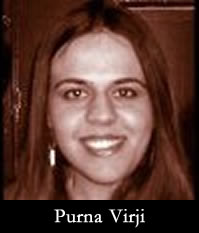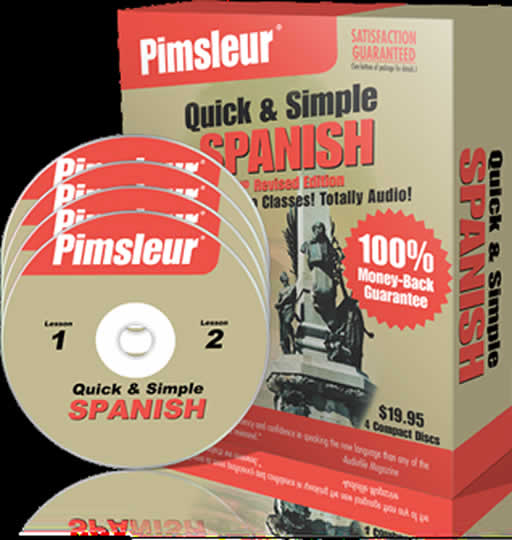 Purna Virji possesses a talent for learning new languages with six in her present language-speaking repertoire. A former multiple award-winning journalist, Purna produced an Emmy-nominated television show on public television. She currently works as marketing manager for Pimsleur Approach, the world leading audio-based language-learning program developed by Dr. Paul Pimsleur. We find Pimsleur Approach a great way for film fans to learn other languages and enjoy international films without reading sub-titles.
Purna Virji possesses a talent for learning new languages with six in her present language-speaking repertoire. A former multiple award-winning journalist, Purna produced an Emmy-nominated television show on public television. She currently works as marketing manager for Pimsleur Approach, the world leading audio-based language-learning program developed by Dr. Paul Pimsleur. We find Pimsleur Approach a great way for film fans to learn other languages and enjoy international films without reading sub-titles.
Cinema Without Borders: Please tell us a little bit about the approach of Pimsleur Approach in teaching languages, especially for our readers who are film fans, who want to understand French, Italian and Spanish films in their native language. How would you compare your system to a well-known system like Rosetta stone?
Purna Virji: The Pimsleur Approach is very effective in teaching languages because we help you speak first. When you think back to when you were a child learning your first language, you learned to speak by hearing your parents speak. It wasn’t until you went to school, about 5, 6, 7 years later, that you learned how to read and write and follow grammar rules. So the Pimsleur Approach is 100% audio mastered and you can use it to learn any way you want, whether it is in your car when you commute or when you are doing the laundry at home. It is very flexible and convenient and you can use it anywhere or anytime.
We also focus on what native speakers of the language use most. For example, Most native speakers only use 2,500 words regularly. When watching movies, you are probably going to hear those words that are most widely used in a language. If you really want to learn what people are actually saying when watching a video or movie, learning these key words and phrases will be most effective. So that is exactly what Pimsleur Approach focuses on – getting you to use and understand more conversational and fluid language that can be used to interact with native speakers or watch movies. It is also important to focus on the vocabulary that you will really like and use in a conversation. I think we all had Spanish or French lessons in school where we learned random phrases like “the red mouse did something.” Those words are not very useful, but with the Pimsleur Approach, you learn to say: “Oh I am really tired” or “I want to go to the theatre;” conversations that you would really have. In terms of how we compare to other language learning methods, with most others you still have to use a computer. Imagine if you had been at work 7-8 hours, you have to then go home, get back on your computer and learn, it’s confusing the brain and you won’t retain it as proficiently. With the Pimsleur Approach, you will have many short conversations and that will help you start speaking the language almost immediately. 
CWB: Is it a requirement that you have to spend at least a half hour a day to learn the language, because there are people, especially in our field, which is filmmaking, they may not have enough time to do a half hour a day, so how does your system work in terms of time and sessions?
PV: That’s the beauty of the Pimsleur Approach, it fits into your lifestyle and schedule. So yes, while we recommend that you listen to it every day, you don’t have to, you can do it on your own time and you catch up and adjust to your lifestyle. You can break it up into small increments, so you do ten minutes in the morning, and ten in the evening. You can break up the lessons, even do a lesson twice a week. The program has a special feature that locks all of this into your memory, so even if you don’t use it for a couple of days you will still have it retained in your brain. While it would be more efficient to do one lesson a day it is not going to hurt and I can tell you from my own experience, I did a few lessons of Greek before I went to Greece, over a year ago and I still remember everything perfectly, so it does stay in your mind.
CWB: From my experience, I tend to get worried if I would remember everything that I learned in this lesson, but this system always goes back and reviews was past learned.
PV: Exactly, all the lessons will build upon each other and will remind you of things you learned in the past. It is really effective and you will not forget. The lesson will also ask questions and if you can answer many of the questions right then that is really good.
CWB: I know that people have different capabilities in learning languages, how does it work with different people, I know some people are faster and some people are slower?
PV: The good thing is that the Pimsleur Approach goes back many, many years. We have been researching for a long time and many considerations have been taken, for both short and long term memory. For example, some people feel that they are slower and are not comfortable moving ahead. They can always complete the same lesson twice and get value. The system is designed to work for anybody and anybody can do it. If you have failed at learning a language before and you want to try again, then Pimsleur will show you how. You are speaking a language now and you learned that, so of course you can learn another one!
CWB: I know that in most of the languages, there are three different levels and packages, if the person goes through all three levels of the languages, how much do you expect that person to be able to understand that specific language.
PV: For the most part they will reach a very high degree of fluency. Of course no one is 100%, even native speakers do not know every word of their language, but the Pimsleur Approach should make you very comfortable moving through another language, visiting or working in another country anddoing most things that you do every day.
 CWB: For our readers there are two kinds of interest in this, one is of course is for film fans who don’t like to be disturbed by the subtitles when they are watching a movie and they want to understand the film without looking at the subtitles and the second is the screenplay writers who happened to work on a co-production project and need to know the other language of the country that they are working with; how much will your system help them?
CWB: For our readers there are two kinds of interest in this, one is of course is for film fans who don’t like to be disturbed by the subtitles when they are watching a movie and they want to understand the film without looking at the subtitles and the second is the screenplay writers who happened to work on a co-production project and need to know the other language of the country that they are working with; how much will your system help them?
PV: I think the system will be very helpful for those who want to watch movies without subtitles, especially if they go through all the levels of the language courses. Even if they only start the initial few lessons, they should be able to pick up a few words and their capability to understand will increase. For screenwriters, we don’t teach writing, only to speak the language. So the program will certainly help them understand the language conversationally, but they will want specialized lessons for writing screenplays.
CWB: For people that like to learn two languages at the same time, is this possible with any system, is this something that you would recommend, or would you say no, learn one and then move to the other one.
PV: I think it varies from person to person. The recommended approach is to finish one and then begin another. Some people are good at multitasking and it is possible to do more than one program simultaneously. My recommendation would be to start with one language, practice a bit, and then start the next one. If someone is pressed for time, they can try it and success will vary from person to person.
CWB: With your language system are you doing any kind of updates?
PV: We recently added a fourth level for Spanish, which was really popular. We keep the programs updated as we go forward, usually trying to get more in depth. We also offer free vocabulary lessons and games on our website, www.pimsleurapproach.com, for people who want to try out the product.
CWB: Will there be any aps for tablets and smart phones anything like that?
PV: We have so many ideas and we would love to do so many things so we’re currently investigating this area and hope to explore apps in the future.

